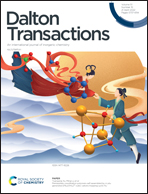Solar-driven photoelectrocatalytic degradation of anticancer drugs using TiO2 nanotubes decorated with SnS quantum dots†
Abstract
In recent years, the growing interest in applying photoelectrocatalysis (PEC) to decompose organic pollutants has resulted in the need to search for new photoelectrode materials with high activity under visible light radiation. The presented research showed an increased photoelectrocatalytic activity under sunlight of Ti/TiO2 sensitized with SnS quantum dots, obtained by the successive ionic layer adsorption and reaction (SILAR) method. The presence of SnS caused the enhanced absorption of visible irradiation and the reduction of recombination of generated charges by a p–n heterojunction created with the TiO2. The highest efficiency of photoelectrocatalytic degradation of anticancer drugs (ifosfamide, 5-fluorouracil, imatinib) was achieved for the SnS-Ti/TiO2 photoelectrode with a SnS quantum dot size from 4 to 10 nm. In addition, a decrease of IF PEC degradation efficiency was observed with increasing pH and with the presence of Cl−, NO3−, HCO3− and organic matter in the treated solution. Studies of the PEC mechanism have shown that drug degradation occurs mainly as a result of the direct and indirect action of photogenerated holes on the SnS-Ti/TiO2 photoelectrode, and the identified degradation products allowed for the presentation of the degradation pathway of IF, 5-FU and IMB. Duckweed (Lemna minor) growth inhibition tests showed no toxicity of the drug solutions after treatment.



 Please wait while we load your content...
Please wait while we load your content...